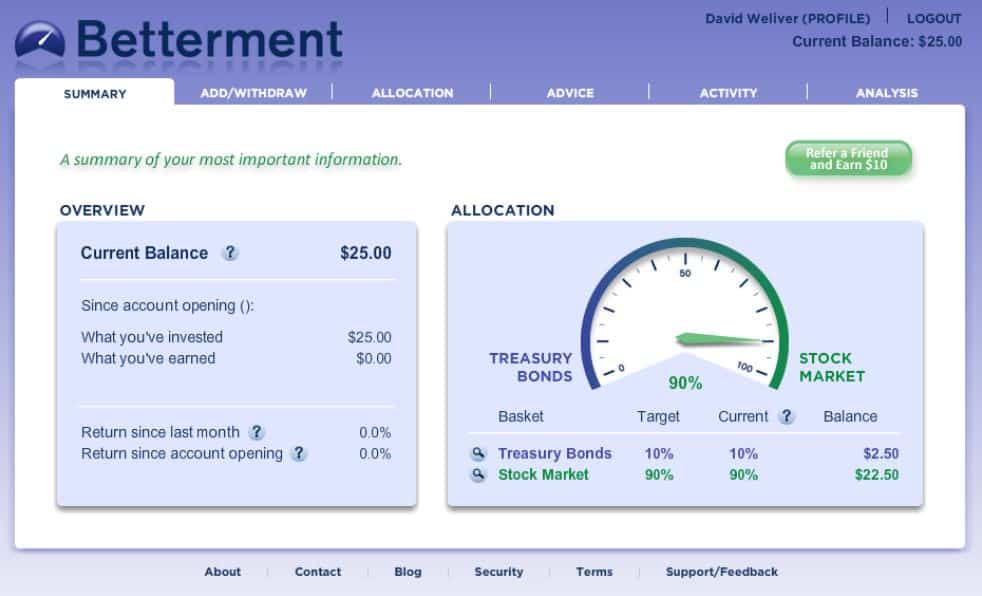The Real Truth Behind the Rise of Robo-Advisors
Table of contents
Table of contents

If you’re a finance professional, the question you probably get asked most by your friends and acquaintances is “what investments they should make”? That’s the basic question that everyone with money will ask. They may ask the “financial advisor” at their bank, they may turn to Google for advice, they may ask their “friends who work in finance”, or they may listen to recommendations of people they trust. However, individuals with a high net worth will typically seek out a wealth management firm with a brand they trust. But which firm?
Try to Google “top wealth management firms” and the first 5 search results will be a comparison of the top 100 wealth management firms. That’s a very competitive space. How do you differentiate yourself from your 99 competitors who are essentially trying to do the same thing you are? One way is through the use of technology, and as a result, we see the rise of “robo advisors“. Here’s the definition of a “robo-advisor” from Investopedia:
A robo-advisor is an online wealth management service that provides automated, algorithm-based portfolio management advice without the use of human financial planners. Robo-advisors use the same software as traditional advisors, but usually only offer portfolio management and do not get involved in more personal aspects of wealth management, such as taxes and retirement or estate planning.
When you go into a top wealth management firm, you’re introduced to an investment advisor who takes you into a nice comfy room where they get to know you. Small talk aside, what they’re trying to find out from you is what your risk tolerance is. Your risk tolerance is directly related to your age and your future life events. Your life is essentially a timeline of cash flows that your investment advisor needs to match to your available wealth. The most basic strategy that every wealth management firm will employ is what percentage of your wealth should be allocated to fixed income, and what percentage to equities.
This allocation adjusts as you age. Most people don’t want to do this themselves, because they expect finance professionals to have a better understanding of what’s best for them. This is why relationships are so important in wealth management. You have to trust your investment advisor when your portfolio dips by 30% and he or she tells you to buy more. Now let’s take the human element out of the equation. Let’s say that you have direct access to the software that makes allocation recommendations, the very same software that your investment advisor uses. We can then refer to that software package as “robo advisor software”.
A “robo-advisor” is the same service provided by wealth management before but without the overpaid high paid wealth management advisor who takes your parameters and puts them into a spreadsheet. There is no real value add here that wasn’t there before. When we first heard about “robo advisors”, we envisioned some “deep learning” technology that would do what a human investment advisor could do, but do it better. We were even more hopeful when we saw “robo advisors” being marketed with ads like the following that appeared in Time:
The truth is that for now there is no artificial intelligence being used. There is no use of robotics either. It’s simply software that has been used all along being packaged with a fancier name. An article was published by Financial News a few days ago titled “Robo-advisory: Tech that will unleash an investment revolution“. The article stated:
Consultant AT Kearney has estimated that robo-advice will be accessed by investors worth $2.2 trillion by 2020, equivalent to 12% of the global retail funds. The current robo total is $55 billion, which implies funds under automated management will rise 40-fold.
That’s massive growth in just 4 years. People are open to the idea of “robo-advisors”, and the concept is said to appeal particularly to the Millennial generation. This means that every big wealth manager in the game is developing a “robo-advisory” offering. But let’s just be frank about what the “robo-advisor” value proposition really is. It’s just the same offering before but with the human element removed and lower fees. Whereas before you needed to have $250,000 to walk into a wealth manager’s office, now you can engage with their “robo-advisor” online with just $5,000. There isn’t any advanced technology being put to use here at all. The “investment revolution” is just retail investors moving from high cost personalized wealth management to low-cost automated wealth management. It’s not necessarily a bad thing for either party. Wealth managers reduce costs and retail investors pay less fees.
Conclusion
The value proposition is exactly the same as it was before and everyone wins. We wouldn’t exactly see this as something truly disruptive so we’re moving on. We’ll take another look at this space when we see the first “robo-advisory” firm that claims to employ “deep learning“. Now that might be some value add worth looking at.
Sign up to our newsletter to get more of our great research delivered straight to your inbox!
Nanalyze Weekly includes useful insights written by our team of underpaid MBAs, research on new disruptive technology stocks flying under the radar, and summaries of our recent research. Always 100% free.
















